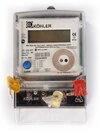maker_vu7m2e8e_1663605226
- Sep 19, 2022
- 7
- Joined
- Sep 19, 2022
- Messages
- 7
Hey guys,
Sorry if this is in the wrong place, I know nothing about electronics, so am hoping you good people can help.
I'm hopefully going to be installing a solar and battery system in my house soon, and it's a big system, so I think my DNO will tell me I'm not allowed to export any energy back to the grid.
Now it's easy enough to do that, I can simply put an isolator switch between my meter and consumer unit. However, if my inverter senses the grid is down, it goes into a crappy mode called EPS, which uses dedicated circuits to power essentials, but from what I've read on a forum (not in the manual), will only power this circuit with energy from the battery and not the solar power.
So, I would like to know if it would be possible to trick the inverter into thinking the grid is still running. It detects if the frequency falls below 50hz, and assumes an issue with the grid. So is there something that I could put in line with the inverter that would achieve this?
Cheers guys,
Jay
Sorry if this is in the wrong place, I know nothing about electronics, so am hoping you good people can help.
I'm hopefully going to be installing a solar and battery system in my house soon, and it's a big system, so I think my DNO will tell me I'm not allowed to export any energy back to the grid.
Now it's easy enough to do that, I can simply put an isolator switch between my meter and consumer unit. However, if my inverter senses the grid is down, it goes into a crappy mode called EPS, which uses dedicated circuits to power essentials, but from what I've read on a forum (not in the manual), will only power this circuit with energy from the battery and not the solar power.
So, I would like to know if it would be possible to trick the inverter into thinking the grid is still running. It detects if the frequency falls below 50hz, and assumes an issue with the grid. So is there something that I could put in line with the inverter that would achieve this?
Cheers guys,
Jay

